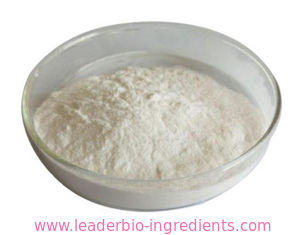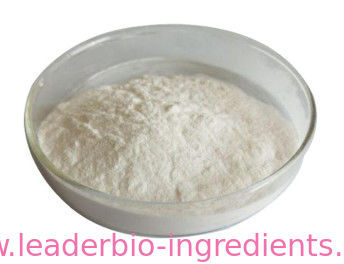| Chemical properties |
light yellow crystalline powder, soluble in ethanol, and other organic solvents, insoluble in water. |
| Application and Synthesis |
UV-9 is a light yellow or white crystalline powder, also known as sunscreen 2, BP-3, suitable for polyvinyl chloride, polyvinylidene chloride, polymethyl methacrylate , unsaturated polyester, ABS resin and cellulose resin and other plastics, the maximum absorption wavelength range of 280-340 nm, the general amount of 0.1-1.5%, good thermal stability, does not decompose at 200 ℃. This product hardly absorb visible light, it applies to light-colored transparent products. This product can also be used for paints and synthetic rubber. For the broad-spectrum UV absorbers, with high absorption rate, non-toxic, non-teratogenic effect, light, thermal stability. UV-9 can absorb UV-A and UV-B togr, is the US FDA approved Class I sunscreen and being used with a higher frequency in the US and European countries. UV-9 is widely used in sunscreen cream, cream, honey, lotion, oil and other sunscreen cosmetics, but also as a product from the photosensitive and discoloration of the anti-discoloration agent. In addition, it is usually used for PVC and unsaturated polyester and many other fields, because UV-9 has good compatibility with many kinds of plastics and resins. |
| Improvement of UV - 9 Production Process |
Using mixed acid as catalyst, trichloromethylbenzene and resorcinol were condensed into intermediate 2,4-dihydroxydiphenyl ketone in aqueous phase, and then the catalyst was treated with phase transfer catalyst, rification of the target product UV-9. |
| Chemical Properties |
white to light yellow crystalline powder |
| Uses |
ultraviolet screen |
| Uses |
Oxybenzone is an organic compound used in sunscreens. Oxybenzone is used as an ingredient in sunscreen and other cosmetics because it absorbs UVB and short-wave UVA (ultraviolet) rays. Oxybenzone was one of the first compounds incorporated into sunscreen formulations to offer enhanced UVA protection because its absorption spectrum extends to less than 350 nm. |
| Uses |
Sunscreen. UV stabilizer |
| Uses |
Ultraviolet light absorber and stabilizer, especially in plastics and paints. |
| Uses |
oxybenzone (benzophenone-3) is the drug name for an FDAapproved uV filter and absorber. |
| Uses |
benzophenone-3 (oxybenzone) is an oil-soluble uV absorber and filter with absorption rates within the uVA and uVB peak ranges. It has an approved usage level of up to 6 percent in the united States and 10 percent in the european union. Benzophenone-3 enhances SPF and is popular among sunscreen formulators given a concern over potential safety problems associated with more traditional sunscreen chemicals. However, some reports associate it with causing photocontact allergy. It is considered a non-comedogenic raw material. |
| Preparation |
Preparation by partial methylation of 2,4- dihydroxy-benzophenone,
? with methyl iodide in the presence of sodium hydroxide;
? with a methyl halide;
? with dimethyl sulfate in the presence of sodium hydroxide or alkaline solution. |
| Definition |
ChEBI: A hydroxybenzophenone that is benzophenone which is substituted at the 2- and 4-positions of one of the benzene rings by hydroxy and groups respectively. |
| Brand name |
Uvinul M40 (BASF). |
| Synthesis Reference(s) |
Tetrahedron, 42, p. 885, 1986 DOI: 10.1016/S0040-4020(01)87495-0 |
| General Description |
White to off-white or light yellow powder. |
| Air & Water Reactions |
Insoluble in water. |
| Fire Hazard |
Flash point data for Oxybenzone are not available; however, Oxybenzone is probably combustible. |
| Contact allergens |
BZP-3 is used as a direct sunscreen agent and in antiaging creams. Allergic reactions have been reported. Cross-reactivity is expected in an average of one in four patients photoallergic to ketoprofen. |
| Safety Profile |
Poison by intraperitoneal route. Mddly toxic by ingestion. Experimental reproductive effects. Mutation data reported. When heated to decomposition it emits acrid smoke and irritating fumes. |

